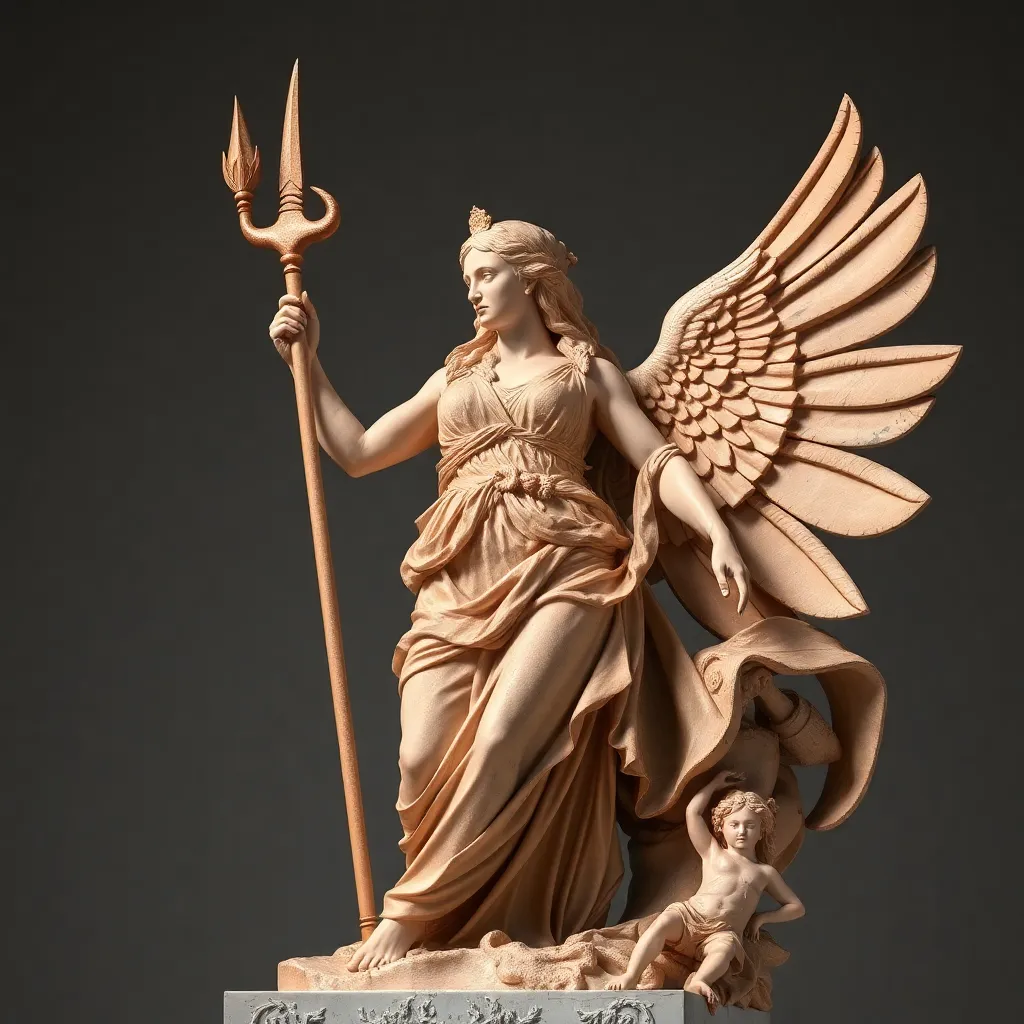The Artistic Legacy of Athena: How She Inspired Sculptors and Painters
I. Introduction
Athena, the Greek goddess of wisdom, warfare, and the arts, holds a prominent place in Greek mythology. Revered for her intelligence and strategic prowess in battle, she embodies the balance between intellect and strength. As a muse for artists across centuries, Athena has inspired countless sculptors and painters, becoming a symbol of creativity, empowerment, and cultural heritage. This article explores Athena’s influence on artistic expression throughout history, highlighting her significance in the realms of sculpture, painting, and beyond.
II. The Symbolism of Athena
Athena is often represented with specific attributes that reflect her multifaceted nature. Among these are:
- Wisdom: Athena is the epitome of knowledge and strategic thinking.
- Warfare: Unlike Ares, who represents chaotic war, Athena symbolizes disciplined and just warfare.
- Craftsmanship: She is associated with various arts, including weaving and pottery.
- Animals: The owl, a symbol of wisdom, and the snake, representing guardianship, are often linked to her.
This duality of wisdom and warfare is a significant theme in her artistic representation, allowing artists to explore the complexities of her character. Athena’s symbolism resonates deeply in artistic expression, serving as a muse that inspires works reflecting both the beauty of intellect and the strength of character.
III. Athena in Classical Sculpture
Classical sculpture prominently features Athena, showcasing her as a central figure in ancient Greek art. Notable examples include:
- The Parthenon and its Friezes: Built in her honor, the Parthenon is adorned with intricate friezes depicting mythological battles and religious processions, highlighting her role as protector of the city of Athens.
- The Athena Parthenos by Phidias: This colossal statue, once housed in the Parthenon, depicted Athena in full armor, symbolizing her martial prowess and divine protection.
Sculptors utilized various techniques and materials, such as marble and bronze, to create lifelike representations of Athena. The impact of these works on later generations of artists is immense, as they paved the way for the revival of classical themes and techniques in subsequent art movements.
IV. Athena in Renaissance Art
The Renaissance marked a period of renewed interest in classical antiquity, leading to a reinterpretation of Athena through the lens of humanism. Prominent Renaissance artists drew inspiration from her, including:
- Botticelli’s “Pallas Athena”: This painting presents Athena as a figure of grace and wisdom, embodying the Renaissance ideals of beauty and intellect.
- Raphael’s “The School of Athens”: In this famous fresco, Athena appears alongside other great philosophers, symbolizing the harmony of knowledge and wisdom in human thought.
The revival of classical themes during the Renaissance allowed artists to explore Athena’s character in new and innovative ways, blending her attributes with contemporary ideals of art and philosophy.
V. Athena in Baroque and Neoclassical Art
The transition into the Baroque and Neoclassical periods saw changes in artistic styles and themes, with Athena remaining a significant figure. Key artists who depicted her include:
- Gian Lorenzo Bernini: His dynamic sculptures captured the essence of Athena’s strength and intellect, showcasing her as a powerful presence in dramatic compositions.
- Antonio Canova: Known for his neoclassical sculptures, Canova’s works often depicted Athena with a focus on idealized beauty and grace, reflecting the cultural shifts of his time.
This evolution in Athena’s portrayal illustrates how artists adapted her image to respond to the cultural and artistic trends of their respective eras, enriching her legacy in the art world.
VI. Modern Interpretations of Athena
Contemporary artists continue to draw inspiration from Athena, reinterpreting her themes in diverse forms of media. Modern interpretations often explore her relevance in today’s society, including:
- Literature: Authors incorporate Athena as a symbol of wisdom and empowerment in various narratives.
- Film: Movies often depict Athena-like characters who embody strength and intelligence.
- Digital Art: Contemporary artists utilize digital platforms to explore and reinterpret Athena’s symbolism, creating vibrant and innovative representations.
The exploration of Athena’s themes in modern media reflects her enduring relevance in today’s artistic discourse, as artists seek to connect her legacy to contemporary issues and ideals.
VII. The Enduring Influence of Athena
Athena stands as a powerful symbol of empowerment and wisdom. Her impact on feminist art and representation is particularly noteworthy, as artists have embraced her as an icon of strength and intelligence for women. The role of Athena in shaping artistic identity across cultures underscores her universal appeal and significance.
VIII. Conclusion
In summary, Athena’s artistic legacy is profound and multifaceted. From classical sculptures to Renaissance paintings and modern interpretations, her influence continues to inspire artists across generations. Reflecting on the ongoing inspiration she provides, it is essential to preserve and celebrate her impact on the arts. Athena remains a timeless muse, embodying the ideals of wisdom, strength, and creativity that resonate with humanity’s artistic spirit.




